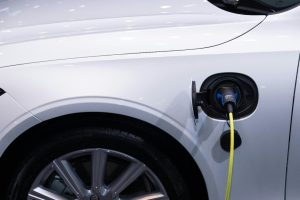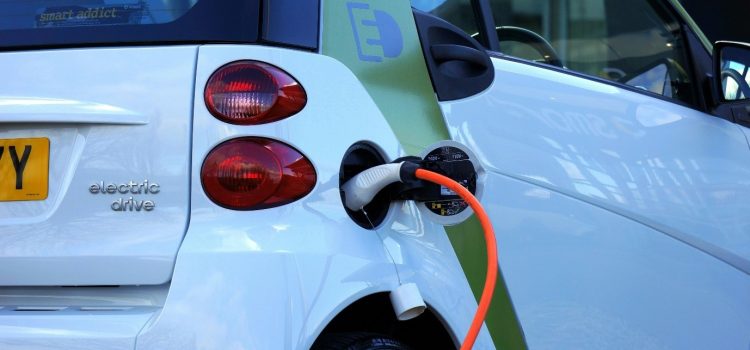
Innovations in Electric Vehicle Accessories for 2024
Electric vehicles (EVs) are becoming increasingly popular as a sustainable alternative to traditional internal combustion engine vehicles. With advancements in technology and growing environmental awareness, EVs offer several benefits but also come with their own set of challenges. This article provides a comprehensive analysis of the pros and cons of electric vehicles.

Introduction to Electric Vehicles
Electric vehicles are powered by electric motors rather than internal combustion engines. They use energy stored in batteries, which can be recharged via electrical outlets or charging stations. The rise of EVs is driven by the need to reduce greenhouse gas emissions, improve air quality, and decrease reliance on fossil fuels.
Pros of Electric Vehicles
Environmental Benefits
One of the primary advantages of electric vehicles is their positive impact on the environment. Unlike traditional vehicles that burn gasoline or diesel, EVs produce zero tailpipe emissions. This significantly reduces the amount of pollutants such as carbon dioxide (CO2), nitrogen oxides (NOx), and particulate matter released into the atmosphere.
Key Points:
- Reduced Greenhouse Gas Emissions: EVs contribute to lowering the overall carbon footprint, especially when charged from renewable energy sources.
- Improved Air Quality: By eliminating tailpipe emissions, EVs help reduce urban air pollution and related health issues.
Economic Savings
Electric vehicles offer several economic advantages over their gasoline-powered counterparts. Although the initial purchase price of an EV can be higher, the long-term savings are notable.
Key Points:
- Lower Fuel Costs: Electricity is generally cheaper than gasoline or diesel, leading to reduced operating costs.
- Reduced Maintenance Costs: EVs have fewer moving parts compared to internal combustion engines, resulting in lower maintenance and repair expenses.
Technological Advancements
EVs are at the forefront of technological innovation. They come equipped with the latest features that enhance driving experience, safety, and convenience.
Key Points:
- Advanced Driver Assistance Systems: Many EVs include features such as adaptive cruise control, lane-keeping assist, and automated parking.
- Innovative Battery Technology: Ongoing advancements in battery technology are improving range, charging speed, and overall vehicle performance.
Future Outlook for Electric Vehicles
The future of electric vehicles looks promising, driven by rapid advancements in technology and growing environmental concerns. As battery technology improves, we can expect longer driving ranges, faster charging times, and lower costs for EVs. Innovations such as solid-state batteries and ultra-fast charging stations are on the horizon, which could address many of the current limitations of electric vehicles. Furthermore, government policies and incentives aimed at promoting clean energy and reducing carbon emissions will likely continue to support the growth of the EV market. As the automotive industry shifts towards electrification, we may also see increased collaboration between tech companies and automotive manufacturers, leading to more sophisticated and user-friendly electric vehicles.
The Role of Consumer Adoption
Consumer adoption plays a crucial role in the widespread acceptance of electric vehicles. Public perception and awareness of EV benefits are improving, but there is still work to be done in educating potential buyers about the advantages of going electric. Increased visibility and accessibility of electric vehicles, along with improved charging infrastructure, will help ease concerns and encourage more people to make the switch. Additionally, as EVs become more integrated into everyday life, factors such as resale value, variety of models, and overall cost of ownership will continue to influence consumer choices. By addressing these factors and promoting greater awareness, the transition to electric vehicles can gain momentum, contributing to a more sustainable and eco-friendly future.
Cons of Electric Vehicles
Limited Driving Range
One of the main drawbacks of electric vehicles is their limited driving range compared to traditional vehicles. Although advancements in battery technology are continually improving range, it remains a concern for potential EV buyers.
Key Points:
- Range Anxiety: The fear of running out of battery power before reaching a charging station can be a significant barrier to EV adoption.
- Charging Infrastructure: While expanding, the network of public charging stations is still less developed compared to the availability of gasoline stations.
Higher Initial Costs
Electric vehicles often come with a higher upfront price compared to their gasoline-powered counterparts. This can be a deterrent for many buyers, despite the potential for long-term savings.
Key Points:
- Purchase Price: The cost of EVs is generally higher due to the expensive battery technology and limited production scale.
- Incentives and Subsidies: While various government incentives can help offset these costs, they may not be available in all regions or might be phased out over time.
Charging Time and Convenience
The time required to charge an electric vehicle can be longer than refueling a gasoline vehicle. This difference in convenience can be a significant drawback for some users.
Key Points:
- Charging Time: Depending on the type of charger and the vehicle’s battery capacity, charging can take anywhere from 30 minutes to several hours.
- Home Charging Infrastructure: Installing a home charging station requires additional investment and may not be feasible for everyone, particularly those living in apartments or rental properties.
Comparative Table: Electric Vehicles vs. Internal Combustion Engine Vehicles
| Feature | Electric Vehicles (EVs) | Internal Combustion Engine Vehicles (ICEVs) |
| Emissions | Zero tailpipe emissions | High emissions of CO2, NOx, and particulate matter |
| Fuel Cost | Lower, electricity is cheaper | Higher, gasoline/diesel is more expensive |
| Maintenance Costs | Lower, fewer moving parts | Higher, more complex engine components |
| Driving Range | Limited, improving with technology | Generally higher, depending on tank size |
| Charging Time | Longer, varies by charger type | Quick, refueling takes minutes |
| Initial Purchase Price | Higher, due to battery technology | Generally lower, more affordable options |
| Technological Features | Advanced features and innovation | Varies, generally less advanced |
| Environmental Impact | Lower, significant reduction in pollution | Higher, contributes to greenhouse gases |
Analysis Table: Pros and Cons of Electric Vehicles
| Aspect | Pros | Cons |
| Environmental Impact | Reduces greenhouse gas emissions | Limited impact if charged from non-renewable sources |
| Economic Benefits | Lower fuel and maintenance costs | Higher initial purchase price |
| Technology | Advanced features, improving battery tech | Limited driving range and longer charging times |
| Convenience | Lower operating costs | Charging infrastructure still developing |
| Health Benefits | Reduces air pollution | Limited public awareness and acceptance |
Conclusion
Electric vehicles represent a promising advancement in automotive technology, offering significant environmental and economic benefits. However, challenges such as limited driving range, higher initial costs, and charging infrastructure remain. As technology continues to evolve and infrastructure expands, the adoption of electric vehicles is expected to increase, driving further innovations and improvements in this sector.
The ongoing shift towards electric vehicles reflects a broader commitment to sustainability and environmental stewardship. For consumers considering an EV, weighing the pros and cons will be crucial in making an informed decision that aligns with their needs and values.










